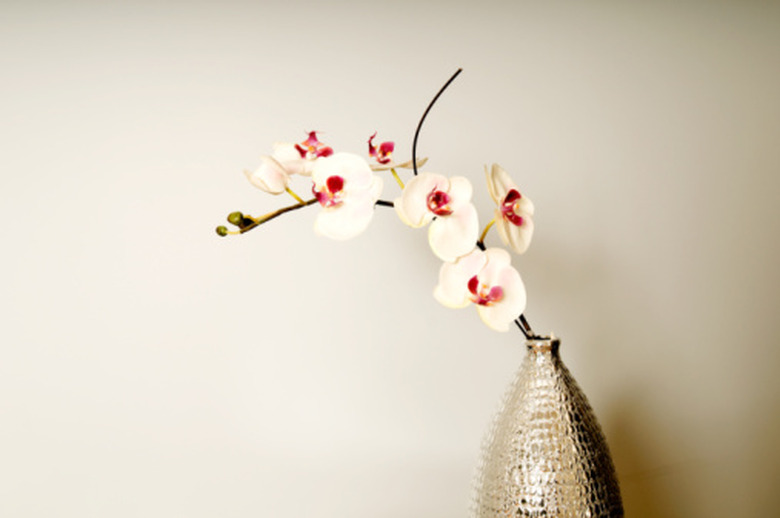How To Reproduce An Orchid
Things Needed
- Mature orchid plant
- Sharp gardening shears
- 2 clean pots
- Orchid-growing compost
- Polystyrene chunks
Orchids are notoriously expensive and temperamental plants, and many orchid owners are intimidated at the prospect of reproducing their orchids. However, orchids are quite hardy and can be reproduced easily. Reproducing your orchid can benefit the overall health of the plant, encouraging new growth. With the right preparation, you can use the division method to reproduce your orchids yourself in an afternoon.
Division
Step 1
Reproduce your orchid during the early spring, just after new growth has become visible on the plant. This gives the divided plants ample time to recover from the stress of division.
Step 2
Remove the orchid from its pot, and examine the roots. The roots should cover the outside of the growing medium and should be white in color. If the roots are not white, you may be over watering your orchid.
- Orchids are notoriously expensive and temperamental plants, and many orchid owners are intimidated at the prospect of reproducing their orchids.
- If the roots are not white, you may be over watering your orchid.
Step 3
Grasp the base of the plant, where the plant meets the soil, and gently tug the plant apart into two equal halves. When the halves begin to separate, check the soil in each half for bulbs. To ensure flowering the following season, each half should contain at least three bulbs. Each half should also include some new growth.
Step 4
Pull the halves completely apart, and use a pair of sharp gardening shears or a sharp knife to cut any roots connecting the two halves. Remove the old soil from around the roots on each half.
Repotting
Step 1
Trim the roots to a length of 4 inches, and save the white root trimmings for use in repotting. Completely remove any brown or soggy roots, and discard. These roots may spread rot in the new plants.
- Grasp the base of the plant, where the plant meets the soil, and gently tug the plant apart into two equal halves.
- Trim the roots to a length of 4 inches, and save the white root trimmings for use in repotting.
Step 2
Place several pieces of bark or polystyrene in the bottom of each new pot to encourage drainage. Gently ease each divided plant into its new pot, positioning the plant so that the new growth is at the center of the pot. Pack the sides of the pot with the trimmed white roots, and fill around the roots with orchid compost. Press the compost into place so that the plant is secure in the pot.
Step 3
Soak the plants from above, and allow them to drain for two hours. Soak the plants once more, and do not water again for two weeks. Keep the plants in a shady area for the first two months after repotting.
- Place several pieces of bark or polystyrene in the bottom of each new pot to encourage drainage.
- Pack the sides of the pot with the trimmed white roots, and fill around the roots with orchid compost.
